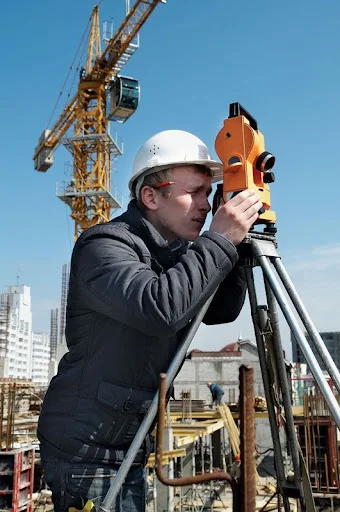Theodolite basics
Theodolite basics:
A theodolite is a precision optical instrument used for measuring angles in horizontal and vertical planes. It is commonly used in surveying, engineering, and construction to determine the exact angles and directions between different points on the ground or other surfaces.
Theodolites consist of a telescope mounted on a rotating base that can be turned horizontally (azimuth) and vertically (elevation). They also have graduated circles or scales for measuring angles in both planes. The telescope can be adjusted for focus and also features crosshairs or other reticles to aid in aiming and measuring.
To use a theodolite, it is set up on a tripod or other stable base, and its orientation is aligned with a reference point or direction. The operator then looks through the telescope and uses the graduated circles to measure the horizontal (azimuth) and vertical (elevation) angles to specific targets or points of interest. These angle measurements can be used to calculate distances, map out land contours, establish boundaries, or perform other surveying and engineering tasks.
Modern theodolites may also include electronic components for easier data collection and analysis. They can be connected to computers or other devices for real-time data transfer and integration with surveying software. This allows for more efficient and accurate measurement processes.
In summary, a theodolite is a precise instrument used for measuring angles in horizontal and vertical planes. It is an essential tool in surveying, engineering, and construction for various applications that require accurate angular measurements.





Post a Comment